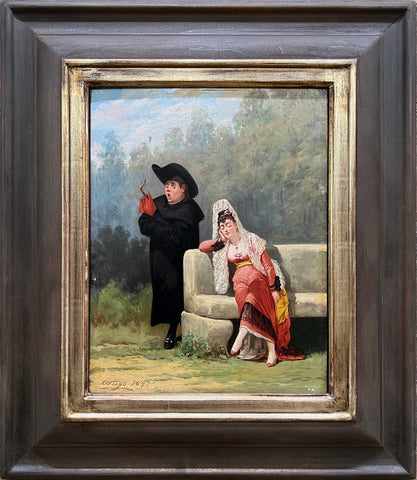Francisco Javier Ortego y Vereda (Madrid, 1833-Bois-Colombes, Paris, 1881).
Spanish painter and draftsman. He studied at the San Fernando School of Fine Arts in Madrid and, very soon, thanks to his ease of drawing, he dedicated himself to making cartoons for periodical publications of the time, such as The Universal Museum , The Red Bird , El Garbanzo , El Bazar , Fray Verás , Don Diego by Night and, above all, Gil Blas . His cartoons and popular archetypes would be published in a collection. He also illustrated literary works, such as that of Pedro Antonio de Alarcón, Journal of a witness to the war in Africa, 1860, or Don Juan Tenorio,by Manuel Fernández and González. He achieved great perfection in the use of the lithographic pencil, imposing it on satirical illustration. As a painter, his best-known work is Death of Christopher Columbus, history painting with which he obtained special honorable mention in the National Exhibition of Fine Arts of the year 1864, but, generally, his pictorial work is of small format and easy composition, based on a theme of popular types. Underpaid as a cartoonist and with a large family, his economic situation was difficult, so in 1871 he moved to Paris to improve his future, which he finally failed to achieve. There he remained until the end of his life, when he moved to a nearby village because of his delicate health. After his death, Editorial Gaspar Roig prepared an edition of the Ortego album, with an anthology of his drawings, which was extended by Pellicer.


